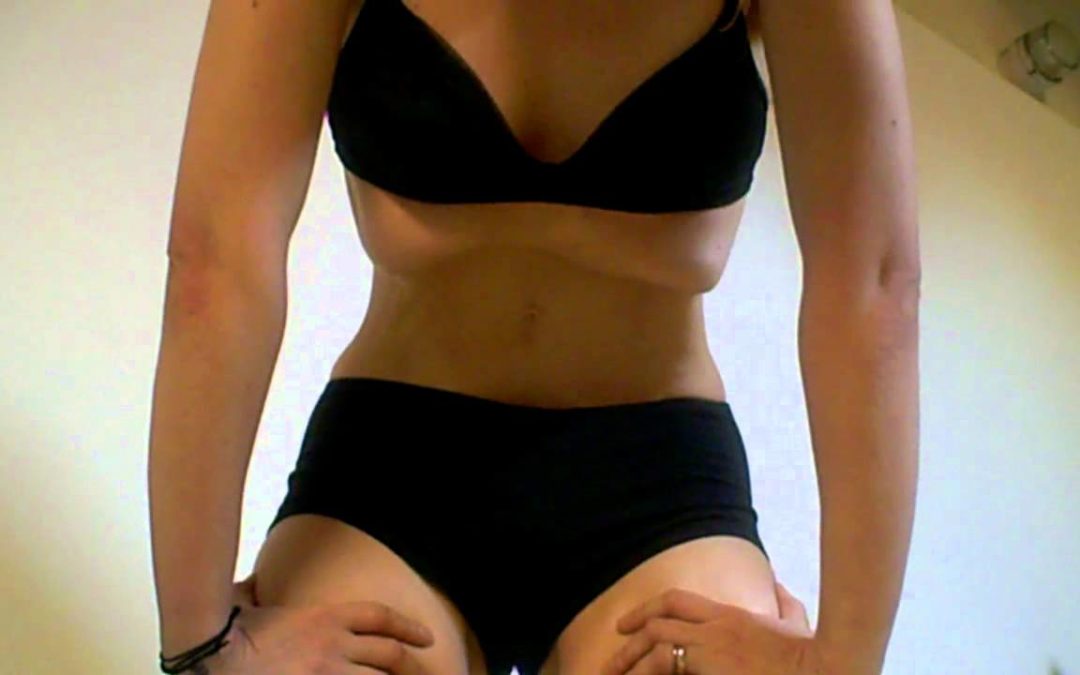A ROOT Awakening: Time For A Gut Check – Yoga Therapy for Type 1 Diabetes and Gastroparesis
Guest blogger: Evan Soroka, evansoroka.com, @diabeticyogini
A big thanks to Evan for sharing her insights with the ROOT Tribe! Check out her bio below and learn more through her newsletter.
Gastro-whatso-sis? Don’t worry, I hadn’t heard about it either until I realized that I had it. Gastroparesis, also known as delayed stomach release, slows down or even stops the stomach’s ability to release food into the small intestine. It’s a common side effect of diabetes and other chronic illnesses, but most common in type 1 diabetics who have been diabetic for over 10 years (me!!)(3). This causes a trifecta of gastrointestinal problems such as gas, bloating, acid reflux and general feelings of ick and discomfort. And if that wasn’t bad enough, this also wreaks havoc on blood sugar control, which inhibits a type 1 diabetic’s ability to discern when to take insulin for a meal.
 As a type 1 diabetic, for years I had suffered from all of gas, bloating – you name it – and uncontrollable blood sugar numbers. My inability to anticipate my digestion time caused me to miscalculate my insulin to carbohydrate ratio, which led to crashes followed by subsequently a skyrocket – think blood sugar yoyo. Its onset was cyclical but unpredictable and extremely disruptive to my life. I had no clue what was causing this!
As a type 1 diabetic, for years I had suffered from all of gas, bloating – you name it – and uncontrollable blood sugar numbers. My inability to anticipate my digestion time caused me to miscalculate my insulin to carbohydrate ratio, which led to crashes followed by subsequently a skyrocket – think blood sugar yoyo. Its onset was cyclical but unpredictable and extremely disruptive to my life. I had no clue what was causing this!
Like a good diabetic yogini, I tried every natural remedy under the sun. Candida-cleanse, parasite cleanse, I went vegan, I went paleo, I went auto-bleeping-immune paleo…I took A LOT of vitamins. When that didn’t work, I went the other route: antibiotics, sonogram and MRI.
To no avail, I spent a small fortune on trying to figure it out. I didn’t “figure it out” until I started using a continuous glucose monitor. With a newfound ability to be hyperaware and vigilant of my blood sugar patterns, I saw a correlation between my stomachaches and blood sugar levels. I read about gastroparesis in Dr. Bernstein’s Diabetes Solution and was shocked to see my whole life in one description. When I asked my doctors and nutritionist they all responded like “oh yeah, at this point with 20 plus years of diabetes, you should definitely have that.” Light bulb!
So, what causes gastroparesis? Gastroparesis is caused by damage to the vagus nerve, which can be occur with illness or, in my case, high blood sugars. The vagus nerve, is a vital part of the body’s natural ability to relax and aids in parasympathetic control of the heart, lungs, stomach and digestive tract. The health and resilience of the vagus nerve is known as vagal tone and healthy vagal tone helps us regulate and calm our bodies after a fight-or-flight stress response to danger. Low vagal tone does the exact opposite (1), which in turn leads to higher levels of stress and decreased ability to control blood sugar – a diabetics worst nightmare.
This is where we fuse yoga therapy and diabetes. Here’s what we know so far: gastroparesis is caused by higher blood sugars that damage the vagus nerve, a side effect of gastroparesis is higher blood sugars and the vagus nerve is important to our body’s ability to regulate stress. The key to healing the body’s response to stress is by improving vagal tone. You can stimulate vagal tone and reduce gastroparesis flare-ups by specific yoga therapy techniques that aid in parasympathetic activation. Here are what I’ve found to be most effective:
Improve Vagal Tone:
Breathing: If you monitor your heart rate while breathing you will find that when you inhale your heart rate rises and when you exhale, your heart rate lowers (2). In yoga, we apply a specific breathing method called ujjayi pranayama or victorious breath, which allows for a larger threshold of breath and improved control of breath. Ujjayi pranayama is a slight valve of the glottis in the back of your throat. Breathe in and out the nose by slightly closing the glottis opening versus breathing from the nostrils.
Challenge: Spend a few minutes watching your breath. Progressively lengthen your exhale so it become twice as long as your inhale. Make sure you do this without strain in your breath or you will trigger a stress response. Stay for 5 minutes.
Yoga poses: If exhale is calming, so too are twists and forwards bends. Always move into twists and forward bends on exhale. Try moving into a standing forward bend or twist on exhale, lengthening your exhale each time, then stay for several breaths maintaining ujjayi awareness.
Caution: twists and flexion should be done lying on the back before any seated twists.
Meditation: Meditation is good for everyone, but just like flossing your teeth most of us do not do it enough. After you practice some dynamic forward bends and twists, sit and practice your breathing exercises. Next, relax your breath and simply feel your breath move in and out without trying to breathe. Watch what arises in the field of your attention. Your breath affects your mind and your mind affects your breath. If you’re just getting started on meditation, you can explore a few popular apps like Headspace and Calm.
Agni Sara: Dr. Bernstein refers to nauli as a way to stimulate the stomach to release. Nauli is considered a purification technique. There are many versions of nauli and can be quite complicated for even an experienced yoga practitioner. I recommend starting simple as on ce again, you do not want to induce a stress response.
ce again, you do not want to induce a stress response.
- Stand with your feet slightly wider than hip width distance.
- Bend your torso forward about 1/3 of the way placing your hand on your thighs.
- Exhale completely and pause after exhalation.
- While you pause, deeply draw your abdominal muscles in and up towards the ribcage.
- Hold breath empty a few seconds before you release.
- Try to relax mind when pausing.
- Slowly inhale and release belly.
- Repeat 12x
Just like yoga therapy, type 1 diabetes and gastroparesis do not have a one-size fits all cure. We cannot cure type 1 diabetes (yet) but we can manage its symptoms and side effects with patience, curiosity and kindness. Be patient with the process as it will not be automatic. With practice, you will become progressively more aware of not only gastroparesis onset but also how other factors in your life (and low vagal tone) may in fact be contributing to your level of suffering. If you want to learn more about how to use yoga therapy to manage type 1 diabetes or any other chronic condition, please subscribe to my newsletter.
Bibliography:
1.https://mosaicscience.com/story/hacking-nervous-system
2.http://www.diabetes.org/living-with-diabetes/complications/mental-health/stress.html?referrer=https://www.google.com/
3. http://www.webmd.com/diabetes/type-1-diabetes-guide/diabetes-and-gastroparesis#1
4. Bernstein, Richard K. The Diabetes Solution. Little Brown Publishers. 1997.
©Evan Soroka Yoga Therapy 2017
 Evan Soroka, C-IAYT, E-RYT 500, is based out of Aspen, Colorado. She specializes in the art of yoga therapy, a blending of modern-day physical & psycho-therapy with the ancient science of ayurveda and yoga. Evan trained in the tradition of Viniyoga™ with Gary Kraftsow and the American Viniyoga Institute. Evan skillfully guides clients to reclaim their power from the stressors of modern-day society all within a structure that is tangible and accessible to people from all walks of life. Working with Evan you will gain the tools to become your own masterful conduit for change. She attributes her health and wellbeing to the science of yoga therapy discovered through her own personal journey with type 1 diabetes as well as under the seasoned direction of her teachers Gary Kraftsow and Rod Stryker. You can find her online at evansoroka.com and on instagram @diabeticyogini
Evan Soroka, C-IAYT, E-RYT 500, is based out of Aspen, Colorado. She specializes in the art of yoga therapy, a blending of modern-day physical & psycho-therapy with the ancient science of ayurveda and yoga. Evan trained in the tradition of Viniyoga™ with Gary Kraftsow and the American Viniyoga Institute. Evan skillfully guides clients to reclaim their power from the stressors of modern-day society all within a structure that is tangible and accessible to people from all walks of life. Working with Evan you will gain the tools to become your own masterful conduit for change. She attributes her health and wellbeing to the science of yoga therapy discovered through her own personal journey with type 1 diabetes as well as under the seasoned direction of her teachers Gary Kraftsow and Rod Stryker. You can find her online at evansoroka.com and on instagram @diabeticyogini


Recent Comments